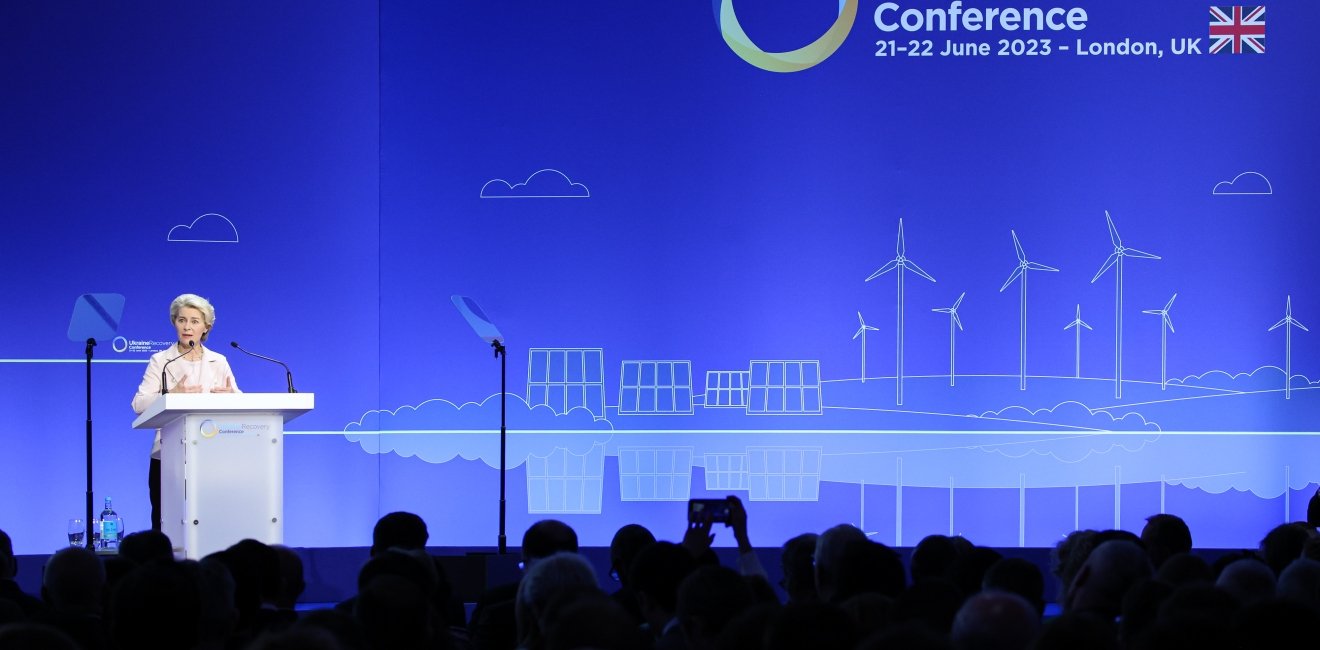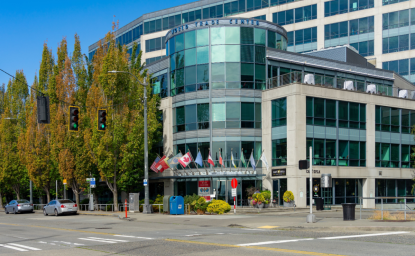On June 20th, during the Ukraine Recovery Conference in London, the European Commission announced the Ukraine Facility, a €50 billion multiyear fund to help Ukraine “recover, reconstruct and modernize” from the devastation of Russia’s invasion. With new data from the Kiel Institute showing the EU overtaking the US on total aid commitments to Ukraine, the Ukraine Facility–the EU’s attempt to institutionalize support over the next years–will play a vital role for Ukraine's economic recovery and its future in Europe. The EU therefore needs to make sure its implementation is effective and expeditious.
The Ukraine Facility is a four-year, €50 billion facility with “non-repayable support and loan support” to “cater for both short-term recovery needs and medium-term reconstruction and modernization of Ukraine”. The key part of this funding mechanism will be a recovery plan, drafted by Ukraine together with the EU. The recovery plan will outline necessary reforms on rule of law, public administration and anti-corruption Ukraine will have to implement to receive funding from the instrument.
In this way, the Ukraine Facility greatly resembles the NextGenerationEU (NGEU)– the EU’s recent €800 billion recovery instrument with both grants and loans to kickstart the EU’s economy after COVID-19. The NGEU has faced a number of problems from lack of flexibility to burdensome bureaucracy; it offers useful lessons for how to implement the Ukraine Facility. Receiving most NGEU funding requires a member state to submit a national Recovery and Resilience Plan (RRP); each plan has to be approved by the Council of the European Union. Although these are two inherently different recovery instruments brought about by very different sets of circumstances and with different end goals–their structure revolving around a national plan as well as their implementation–is set on similar guidelines by the European Commission. Therefore, the EU should take lessons from the NGEU implementation when designing the Ukraine Facility.
With new data from the Kiel Institute showing the EU overtaking the US on total aid commitments to Ukraine, the Ukraine Facility–the EU’s attempt to institutionalize support over the next years–will play a vital role for Ukraine's economic recovery and its future in Europe.
Rigid, Bureaucratic and Slow
There are three things the EU should take into account when designing the Ukraine Facility. The first is flexibility. The NGEU’s lack of flexibility was evident at the beginning of Russia’s invasion of Ukraine, when many in the EU advocated redirecting NGEU funding to detach the bloc from Russian energy. To achieve this goal, a new instrument, REPowerEU, had to be created. This took considerable time, as all member states needed to renegotiate their national RRP’s to get the funding. The ability to adapt to potential future challenges is therefore something the EU has to take into account with the Ukraine Facility to ensure the instrument's maximum success.
The second lesson is to design a simple recovery instrument. A major problem of the national RRP’s have been their bureaucratic complexity. In France, the President of the French Court of Auditors slammed the French RRP for “being over-complicated, difficult to monitor, and involving too many actors that are not immediately identifiable”. In Italy, many small municipalities have been unable to handle the large bureaucracy and complexity of the Italian RRP. By February 2023, Italy had only spent €25.7bn of the €66.9bn of its NGEU funding. As Italy only has until 2026 to spend all of its allocated funding for the envisaged reforms, these problems are holding back its economic recovery. It is therefore important to keep the Ukrainian plan simple to ensure the needed transparency–especially for funding allocated to regional and local governments. Simple plans will also enable Ukraine to fully utilize all available funding to ensure a timely recovery and reconstruction.
The third lesson is to ensure a quick adoption of the Ukraine Facility; the EU should strive to launch the fund as planned by early 2024. One of the main criticisms of the NGEU was the slow adoption—due to infighting—of the instrument and the national RRP’s. The same should not happen with the Ukraine Facility, as the recovery and reconstruction needs in Ukraine are tremendous and urgent.
A Crucial Moment for the EU
The proposed Ukraine Facility shows the EU recognizes the need for both speed and flexibility. However, even after European Commission President von der Leyen’s 2023 State of the European Union Address, there are still no further details. The Ukraine Facility presents a unique opportunity to move Ukraine economically closer to the bloc, a potential watershed moment on Ukraine’s path to EU membership. The proposed recovery instrument for Ukraine therefore needs to be flexible, bureaucratically straightforward and in place by the start of 2024. The successful implementation of the Ukraine Facility will ultimately show the world whether Brussels can take an effective leadership role in Ukraine’s recovery and reconstruction.






